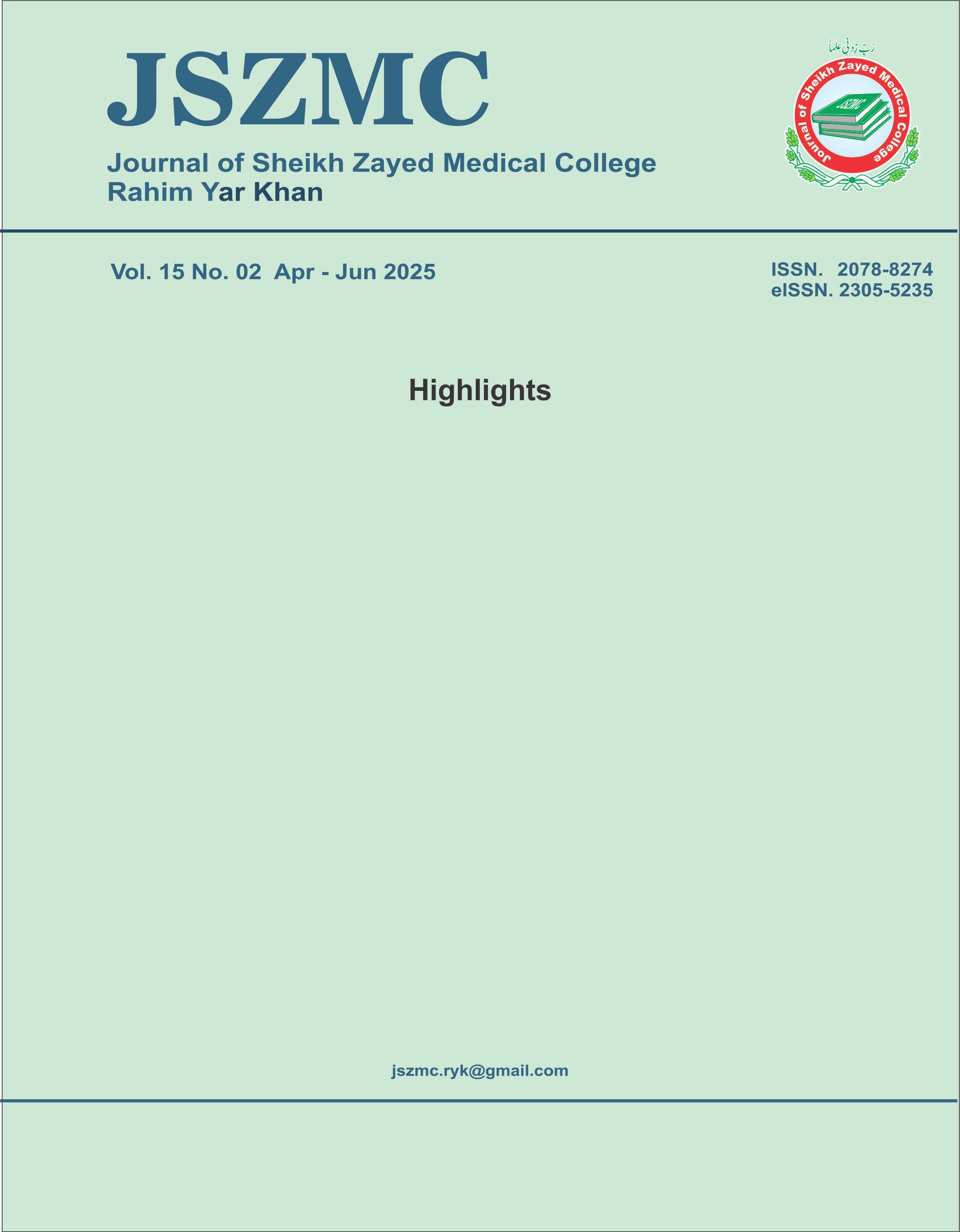Coagulation Profile in Patients with Liver Disease: A Cross-Sectional Study from a Tertiary Care Hospital
DOI:
https://doi.org/10.47883/jszmc.v15i02.276Keywords:
Child-Pugh score, Coagulopathy, Liver disease, Platelet count, Prothrombin timeAbstract
Background: Liver disease is a major public health issue globally, and it significantly impacts coagulation due to the liver’s role in synthesizing clotting factors. Coagulopathy in liver disease increases the risk of bleeding and thrombosis, complicating clinical management. Despite its importance, data on coagulation profiles among patients with liver diseases are limited in Pakistan. Objective: To assess the frequency and severity of coagulopathy in patients with liver diseases presenting to Sheikh Zayed Medical College/Hospital, Rahim Yar Khan, and to determine its association with disease severity. Methodology: A cross-sectional study was conducted from January to June 2024 at Sheikh Zayed Medical College/Hospital, Rahim Yar Khan. A total of 100 adult patients (≥25 years) diagnosed with various liver diseases were enrolled. Complete blood count (CBC), prothrombin time (PT), and activated partial thromboplastin time (aPTT) were assessed. Disease severity was evaluated using the Child–Pugh classification. Data were analyzed using SPSS version 25. Results: Of the 100 participants, 58% were male and 42% female. Thrombocytopenia was observed in 70% of patients, prolonged PT in 59%, and prolonged aPTT in 42%. Coagulopathy was more frequent in patients with higher Child–Pugh scores. Severe thrombocytopenia (<50,000/µL) was present in 34% of patients, while 26% had PT >18 seconds. Significant associations were found between coagulation abnormalities and disease severity (p < 0.05). Conclusion: This study demonstrates a high prevalence of coagulopathy in patients with liver diseases, especially in those with advanced liver dysfunction. Routine assessment of coagulation parameters should be integrated into the management of liver disease patients to guide clinical decision-making and improve outcomes.


